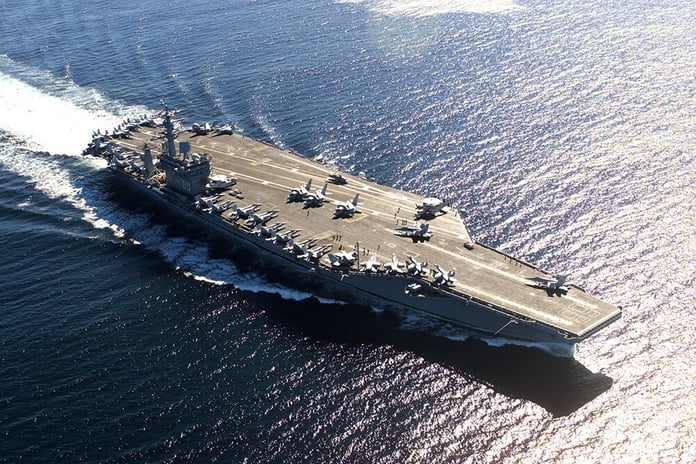According to the Ministry of Defense of the Republic of Korea (RK), the world’s largest nuclear-powered aircraft carrier US Navy Nimitz (CV-68, displacement up to 106,000 tons) approached the waters in the south from the Korean subtropical island of Jeju. She is escorted by the guided missile cruiser Bunker Healy (CG-52), the guided missile destroyer Wayne Meyer (DDG-108) and the destroyer URO Decatur DDG-73.
Upon arrival in Korea, the US carrier strike group began conducting exercises with South Korean ships – the URO King Sejong destroyer (DDG-91) and the Choi Yong destroyer (DDH-981). US and South Korean navy ships are trained in naval combat, escort operations and repelling air attacks. These maneuvers followed a series of Allied exercises that began in early March and continue to this day. At the same time, Washington and Seoul do not hide the fact that the maneuvers suggest North Korea as a potential adversary and are in the nature of a warning to Pyongyang.
According to the statement of the Ministry of Defense of the Republic of Kazakhstan, after the completion of the maneuvers on March 28, the American aircraft carrier group will enter the South Korean port of Busan. Previously, the US aircraft carrier group entered South Korea on September 22 last year. Then it was led by the aircraft carrier “Ronald Reagan” (CVN-76).
Apparently, the DPRK also noticed the arrival of an aircraft carrier, because this morning they fired short-range ballistic missiles, which, judging by their characteristics, are also suitable for attacks on enemy ships. At 7:47 a.m. and then another 13 minutes later, North Korea launched two short-range ballistic missiles from the east coast near the city of Chuhwa in North Hwanghae Province. They traveled 370 km and fell into the waters of the East Sea (Japan). According to South Korean experts, KN-23 missiles were launched, nicknamed “Kimskander” for their similarity to Russian “Iskander” tactical complexes. In flight, they perform anti-missile maneuvers, which makes them difficult to intercept.
It should also be recalled that the DPRK recently announced that it had successfully carried out tests from March 21 to 23 of the “Unmanned Underwater Nuclear Strike Vehicle” “Heil”, capable of causing, according to Pyongyang, “radioactive tsunamis”. The device independently traveled under water at depths of 80-150 m for more than two days, then went to a given area and conditionally defeated the enemy port. At the same time, an explosion of a nuclear warhead was simulated, which the Heil can be equipped with. South Korea has expressed concern about the appearance in the DPRK of such weapons, which are difficult to detect and intercept. According to the principle of operation, “Kheil” is similar to the Russian nuclear torpedo “Poseidon”, but smaller and does not have a nuclear propulsion system.


